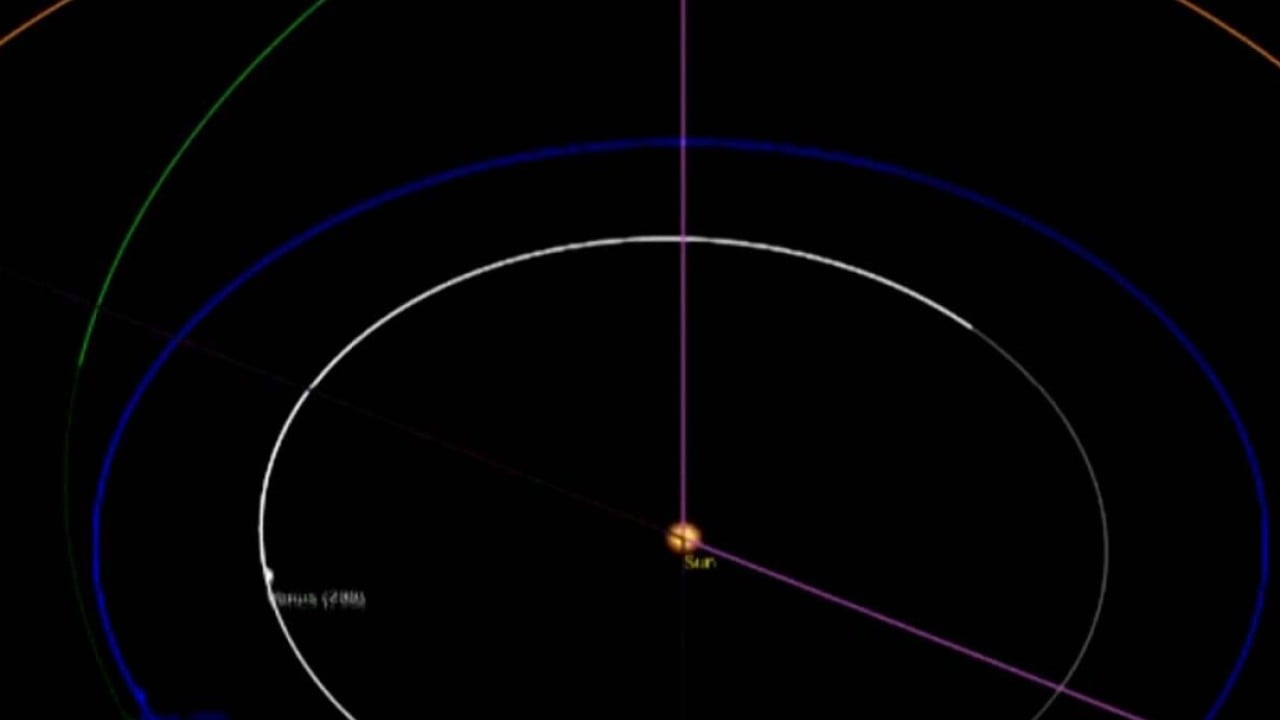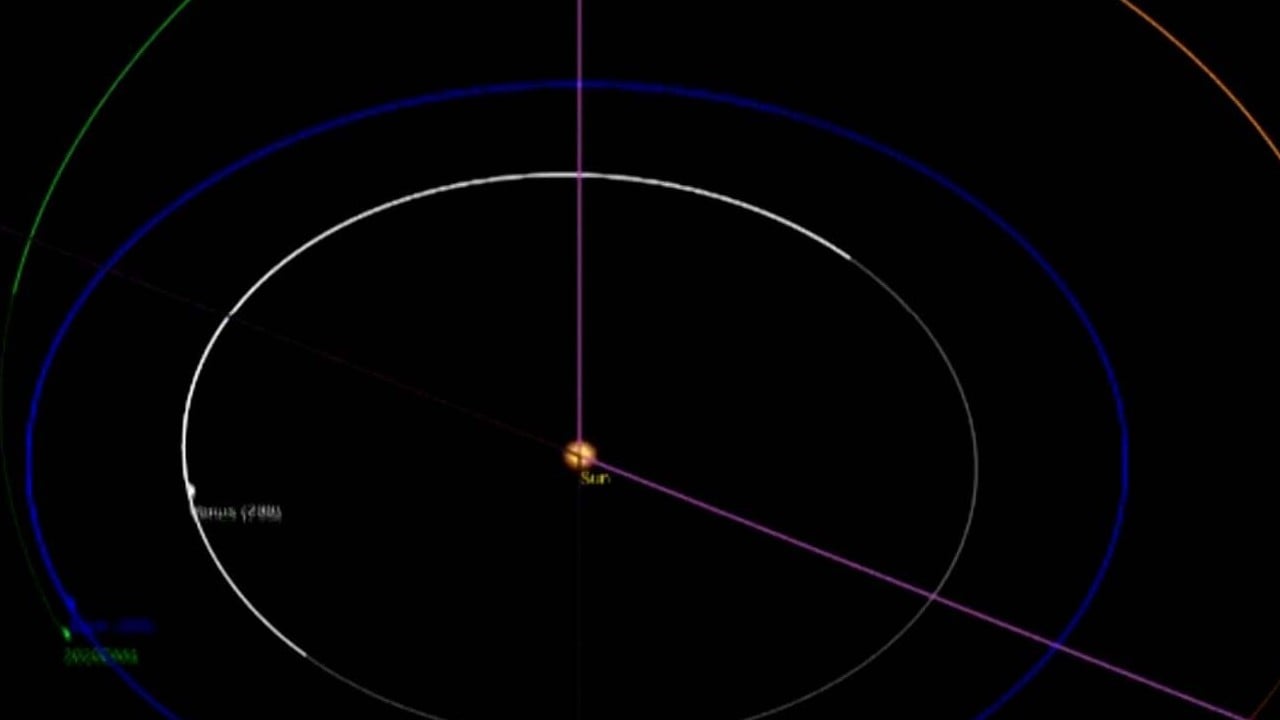The best option to minimise the chance that an asteroid someday smashes into the Earth – possibly wiping out life – is through the use of nuclear weapons, according to scientists at China’s deep space exploration programme.
The researchers said their analysis had found that in some situations, only nuclear weapons could prevent an asteroid from hitting the Earth, adding that they were fully aware of international laws against the use or deployment of nuclear weapons in space, and that nuclear fallout could also cause interstellar pollution.
But they have urged decision makers to think long term and support research and development into a nuclear-based defence to prevent a doomsday threat to humanity.
“The potential risk of asteroid impacts is much higher than the assessment based on currently discovered asteroid data,” the team wrote in a peer-reviewed paper published this month in the Chinese academic journal Scientia Sinica Technologica.
According to the researchers, the technologies most urgently required include: rapid response ability to launch nuclear warheads from Earth to target asteroids within an ultra-narrow time window from seven days to one month; precise strike ability with a margin of error of less than 100 metres (328 feet) after long-distance flight; and long-term orbital deployment ability that allows nuclear warheads to be safely stored in space for more than 10 years.
As near-Earth object detection technology has improved, the number of asteroids catalogued by astronomers has risen rapidly to more than 30,000. However, this may only be the tip of the iceberg, according to experts.
In 2013, an asteroid impact damaged more than 5,000 buildings and injured at least 1,500 people in Russia. Scientists were not aware of the asteroid before it hit, passing through deep space early warning radar undetected as it approached Earth.
“There may be a significant gap between the number of near-Earth asteroids that have been discovered and the actual number that exist,” said the research team, which was led by Zhang He, from the Beijing Institute of Spacecraft System Engineering.
In fact, there could be many undetected asteroids that are threats to Earth, including “giant” asteroids more than 1km (0.6 miles) in diameter, they warned.
Zhang is the head of the spacecraft design team for China’s deep space programme, leading the the construction of the Chang’e-4 probe that made the first soft landing on the far side of the moon in 2019.
China’s deep space exploration programme has been upgraded to a planetary defence plan, and it is working on new infrastructure, including a large-scale radar detection network.
The biggest challenge facing scientists and engineers is to determine the practical method to alter an asteroid’s course.
“A nuclear explosion has amazing performance for self-defence,” Zhang’s team wrote in their paper.
Zhang and her colleagues analysed the effectiveness of various methods of applying external force to different types of asteroids, including kinetic impact, installing rockets or plasma engines or even projectile devices similar to catapults on asteroids, as well as focused sunlight or high-powered laser weapons to change an asteroid’s orbit.
Their findings suggest that if there is just one week until impact, nuclear warheads would be the only hope for humanity. A nuclear warhead with a yield of 1 million tonnes could resist a carbonaceous asteroid 50 metres in diameter; if the target was larger or its main component was silicon, the yield of the nuclear warhead would need to larger, or multiple missiles would need to be launched, the scientists said in their paper.
The largest nuclear warhead ever tested had a yield of 50 million tonnes of TNT. If the warning time to impact was extended to 15 years, a smaller nuclear explosion could eliminate the threat, regardless of the asteroid’s size or composition.

Other methods were only applicable to specific situations. For example, the kinetic impact method, which has was tested by Nasa’s DART mission in 2022, could only divert asteroids under 140 metres in diameter. Even if the warning time was extended to 50 years, it would only be effective against threats up to 350 metres in diameter.
However, no country has the ability to launch nuclear warheads into deep space. Because the large carrier rockets in service today require substantial time for assembly and fuelling, China would have to develop new launch vehicles with rapid-launch abilities, Zhang’s team wrote.
Another technically feasible solution is to pre-deploy nuclear weapons in space – for example at the Lagrange point where the gravitational pull between the Earth and the sun are equal – for long-term standby to shorten response time.
However, China is a signatory to the 1967 Outer Space Treaty and the Comprehensive Nuclear Test Ban Treaty, which prohibit any country from deploying nuclear weapons in space, Zhang’s team wrote.
Nuclear explosions can also cause radioactive pollution. “The implementation of defence measures must avoid secondary harm to Earth and, as much as possible, avoid pollution and threats to the moon, Mars, and other celestial bodies,” the researchers said.
Zhang’s team predicted that it would be difficult for China to send nuclear warheads into space on short notice. Therefore, in addition to nuclear capabilities, it is necessary to simultaneously explore other technological paths, such as kinetic impact and high-power laser weapons, they added.
In July, the Communist Party launched a massive reform plan, with its programmatic document mentioning the need to “accelerate the development of strategic deterrent capabilities”.
The move was generally interpreted as a signal that China was about to expand its nuclear arsenal.
According to some estimates, the Chinese military possesses about 500 nuclear warheads, about one-tenth the size of the nuclear arsenals of the United States and Russia.



